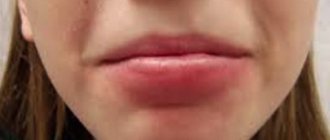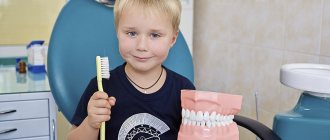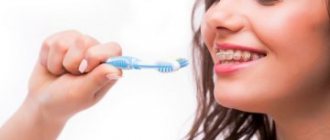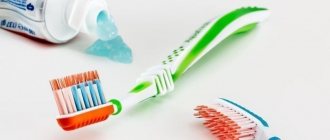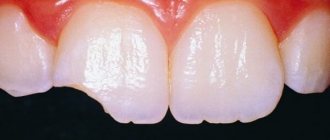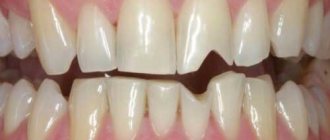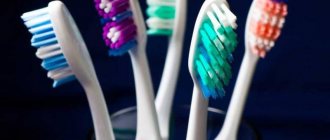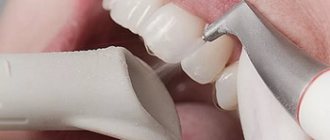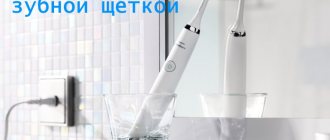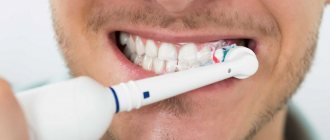Fluoride is one of the health industry's biggest lies.
Almost every tube of toothpaste states that it contains fluoride. It is said to help keep your teeth healthy and protect you from tooth decay. History, as they say, is silent about the fact that if a child accidentally eats a tube of toothpaste and dies immediately, as well as why this actually happens...
How harmful is fluoride?
The topic of fluoride content in dental
pasta is actually not new to me:
My daughter goes to kindergarten, where parents very often discuss at parent-teacher meetings about which toothpaste to brush their children’s teeth with or without fluoride, and they often touch on the topic of the harm of fluoride in toothpaste.
For me this topic was somehow not particularly important. I even laughed inadvertently, saying that people no longer have problems thinking about such unimportant things, until I came across certain information about the dangers of fluoride in toothpaste.
And the ball began to unwind more and more...
The new information gradually makes my hair stand on end, and once again I feel deceived again by this “health industry.”
Before we talk about the dangers of fluoride in toothpaste, let's first understand what fluoride is.
Because fluorine and fluorine are different.
So, what are fluoride and fluorite?
“Secret” composition of toothpastes
The composition of the most ancient toothpastes, the recipes for which were found during excavations, included rather dubious substances: ashes of cow entrails, crushed egg shells, crushed pumice and... urea (yes, ammonia probably whitens teeth well).
The harm of the toothpaste used by the Egyptians (it was in Ancient Egypt that the recipe for toothpaste was found) can hardly be proven or disproved.
But the fact is that most of the popular toothpastes that we use today contain chemicals that are completely unsafe for our health
, we will tell our readers in detail today.
To answer the question of which toothpaste is the safest, you need to study its composition. Most toothpastes contain the following basic chemical elements: fluoride, triclosan, sodium lauryl sulfate
– they will be discussed in the article.
The dangers of fluoride in toothpaste - facts
Fluoride is the fluoride ion. Fluorine is a gas, and in nature it is most often found in compounds with other substances, for example calcium fluoride (CaF) or sodium fluoride (NaF).
You and I consume fluoride from foods such as onions, lentils, almonds, nuts, and green leafy vegetables. But - and here is ATTENTION !
Fluoride, which is flavored with toothpaste, drinking water, some tablets and salt, has NOTHING IN COMMON ! On the contrary, this fluoride is a very toxic chemical by-product of the aluminum, steel and phosphate industry!
Remember this please! Because there is more than enough deception about fluoride!
And why? And in general, where did this so-called fluoridation of teeth come from?
How did it all start?
The “fluoridated wave” came to us from America somewhere in the 50s. As mentioned, fluoride is a by-product of the aluminum, steel, and phosphate industries. As a dangerous poison (and fluoride is even more dangerous than lead and arsenic!), it had to be somehow safely eliminated, for which a lot of money was spent. But “scientists” from the beauty and health industry came to the aid of this industry. And so, poisonous garbage not only began to be disposed of elegantly, but also crazy money began to be made from it.
“Fluoridation is the biggest deception of this millennium.” Robert Carton, Ph.D. 1992
For those who are interested in this topic, here very interestingly about fluoride and how harmful it can be.
Harm of fluoride in toothpaste:
- fluoride was used in both world wars as a gaseous agent
- Sodium fluoride is found in high concentrations in rat poison and some pesticides
- It is found in small quantities in toothpaste, mouthwash and tap water (not available in all countries)
- fluoride can accumulate in the human body, thereby causing gradual but sure poisoning
- accumulating in the body, fluoride kills vital enzymes that are responsible for the functioning of the immune, digestive, respiratory and circulatory systems
- fluoride slowly but surely disables a person's free will, which is why it is found in 60% of psychosamotic medications
“Fluoride causes cancer faster and more powerfully than any other chemical.” Dr. Dan Bark, one of the founders of the American Institute for Cancer Research.
The first signs of enamel destruction
It is necessary to protect teeth preventively, however, when the very first signs of tooth enamel hypoplasia
, urgent mobilization is required. You can recognize the beginning of the process by the white chalky spots that appear on the surface of the tooth. The second symptom is tooth sensitivity. The so-called reaction to cold and hot. At this stage, it is necessary to replace a simple preventive paste for everyday home hygiene with a therapeutic one, which will strengthen the tooth enamel. However, you should still consult your dentist before use.
Negative qualities of the component
Doctors are against the regular use of products with triclosan. This is explained very simply. Not all bacteria are sensitive to the drug. The constant destruction of sensitive flora creates favorable conditions for the growth of other pathogenic microorganisms.
With regular use of triclosan-containing toothpastes, we independently grow dangerous microflora in the oral cavity. That is why you should abandon such products or use them intermittently.
Medicinal and hygienic pastes
Hygienic pastes have a wide spectrum of action; their task is to maintain healthy teeth in good condition and promptly eliminate factors that can negatively affect soft tissues and enamel.
Therapeutic pastes are necessary to solve various problems: depletion of enamel, elimination of caries in the white spot stage, getting rid of tartar, preventing the development of inflammatory processes.
In the Asepta series of professional dental products you will find high-quality pastes of both types; they will help you maintain healthy teeth for a long time and solve various problems with the oral cavity. Remember to brush your teeth twice a day, use rinses and flosses for better cleaning so you don't have to visit the dentist as often.
Antibacterial properties of the component
The periodontium consists of the gums, the cement covering the root of the tooth, the bone tissue of the alveolar process and the ligament that holds the tooth in the bony alveolus. Inflammatory periodontal diseases are most often caused by the action of pathogenic microorganisms.
As an antibacterial component, triclosan is used in anti-inflammatory toothpastes to destroy microbes that multiply in areas of inflammation. In addition, during inflammation, specific substances – inflammatory mediators – accumulate in the tissues of the body.
Normally, they are constantly present in tissues, but during inflammatory reactions the concentration of mediators increases sharply. They increase vascular permeability, which is why redness and swelling appear around the pathological focus.
Due to the release of the liquid part of the blood from the blood vessels into the tissues, pain occurs as the exudate compresses the nerve endings. Local and general increase in temperature is also a consequence of the work of mediators.
The component inhibits the action of mediators and prevents the development of signs of inflammation. Experiments have proven that the use of products with triclosan is effective against gingivitis and other inflammatory diseases of the tissues surrounding the tooth.
Purpose and features of triclosan
The component was first obtained in 1965 by Swiss scientists. The drug belongs to the chlorophenolic group. It is widely used in hygiene products and household chemicals as an antibacterial substance. After the introduction of this component, many studies were conducted to study its safety in relation to human health.
Due to its antibacterial properties, triclosan is active against a wide range of microorganisms. The effectiveness of its use is confirmed by many years of practical experience in using it in hygiene products. The component interacts well with other components of dental products, which makes it possible to create complex formulations. Even in low concentrations it does not lose its properties.
Triclosan acts on the cytoplasmic membranes of various microorganisms, thereby effectively neutralizing pathogenic fungi and bacteria. A significant disadvantage is the destruction of not only negative, but also beneficial microflora.
Harm of triclosan to the body
It has been proven that triclosan, when entering the body, has a number of undesirable effects on various organs and systems.
Hormonal imbalance
The substance, once on the skin as part of creams and ointments, easily passes through the skin barrier, as it is a fat-soluble substance. It enters the bloodstream and behaves like the female sex hormone estrogen. This replacement therapy disrupts hormonal levels and leads to gonadal cancer in men and women. Children may experience early puberty.
Thyroid dysfunction
Triclosan metabolic products interfere with the normal functioning of the thyroid gland. This gland regulates all types of metabolism, is responsible for the formation of energy and the proper development of the body.
Development of heart and vascular diseases
The component changes the contractility of muscle fibers, including the main muscle in the body - the heart.
Destruction of beneficial microflora
The component affects both pathogenic forms and resident microflora of the body. Beneficial bacteria, necessary for a balanced internal environment, die from the action of the substance.
Weakened immune system
To form a strong immune system, the body needs to deal with natural “dirt.” The immune system will then activate its defense systems and produce antibodies. People who have been using personal hygiene products with antibacterial components since childhood are more susceptible to infectious diseases, since their immunity does not develop sufficient resistance to environmental factors.
With prolonged exposure to a substance, pathogenic bacteria develop resistance, or tolerance, to the substance. When an infectious disease develops in the body, the treatment of which requires antibiotics, microorganisms may exhibit the same resistance, and therapy will be ineffective.
Harm to fetal development
According to some studies, triclosan negatively affects the health of the fetus in the womb. It reduces blood flow to the fetal brain, which leads to oxygen deficiency of the organ, and this leads to a disruption in its development.
Poisoning of the body
When interacting with tap water, the substance combines with chlorine. As a result, special compounds are formed - dioxides, which are absorbed into the blood and have a toxic effect on the body.
In addition to its direct effect on the human body, triclosan, when released into the environment with water, pollutes water bodies and soil, and poisons plants and animals.
In Russia you can easily purchase products containing this substance. However, in 2021, US authorities issued a ban on the sale of soap containing triclosan as an antibacterial component. The ban does not apply to other products, including pastes.
